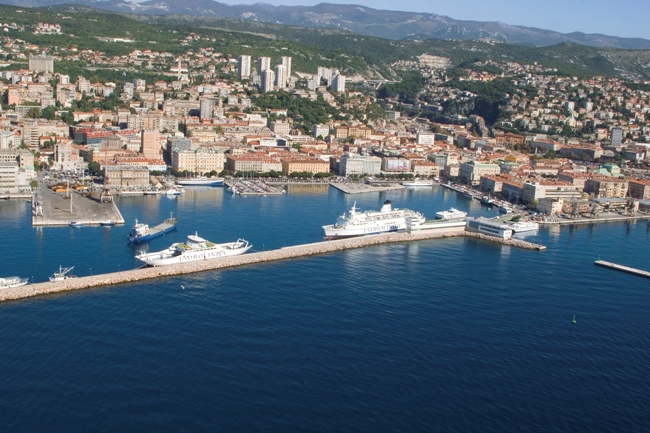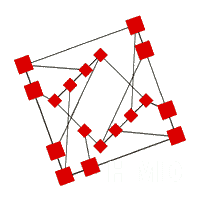|
Rijeka
info
Rijeka – the City (www.rijeka.hr)

Rijeka, with its 200,000 inhabitants, is the third largest city and the
largest Croatian port. Rijeka is situated on the Kvarner Bay, in the
northernmost part of the Adriatic Sea, where the Mediterranean penetrates
deepest into the European mainland coming closest to the countries of
Central Europe. The town is not far from the Italian and Slovenian borders
and is surrounded by mountains and numerous picturesque coastal towns.
Rijeka has a pleasant Mediterranean climate with exceptionally warm
summers and relatively mild winters. Temperatures range between 6ºC (in
January) and 37ºC (in July). The average temperature in July is 23ºC and
the average for the coldest month, January, is 5.2ºC. The most common
winter lows do not venture under 3ºC below zero. High summer air
temperatures affect the sea temperature, which can reach 25ºC, giving an
annual average of 16ºC.
The mountains surrounding the Kvarner, from Učka, over the hills of Gorski
kotar, to Velebit, create an impressive natural setting, which is
especially beautiful when approaching Rijeka from sea. Occasionally during
the year and especially in winter, cold bouts of the bura wind blow from
the mountains, causing sudden drops in temperature and clearing the air
above Rijeka.
The Rječina, a karst river, plays an important role in the life of Rijeka,
supplying the town and its surroundings with drinking water.
The immediate vicinity of the Gorski kotar highlands and coastal tourist
centres offers Rijeka’s inhabitants and visitors a unique opportunity to
take part in various sporting and recreational activities.
Along with its role as an economic and transport focal point, Rijeka
retains its importance as a cultural and educational centre. Numerous
cultural events take place in Rijeka, such as theatre performances,
concerts, exhibitions, the traditional international Rijeka carnival,
fairs, and sporting events. Rijeka is also known for its cultural
monuments, which reflect the styles and events of past centuries: the
remnants of ancient Tarsatica, the Roman Arch called the Gate, which is
the oldest historical monument in Rijeka, the City Tower, the Church of
St. Sebastian, the Church of ’the Assumption, the Palace of the Old Town
Hall and St. Vitus’ Church. It is also known for the Maritime and Historic
Museum of the Croatian Coast (formerly the Governor’s Palace), the
Croatian National Theatre, the University Library with the Modern Art
Gallery, Trsat Castle, and a number of buildings that originate mainly
from the 19th century.
Rijeka Tourist Board
|

